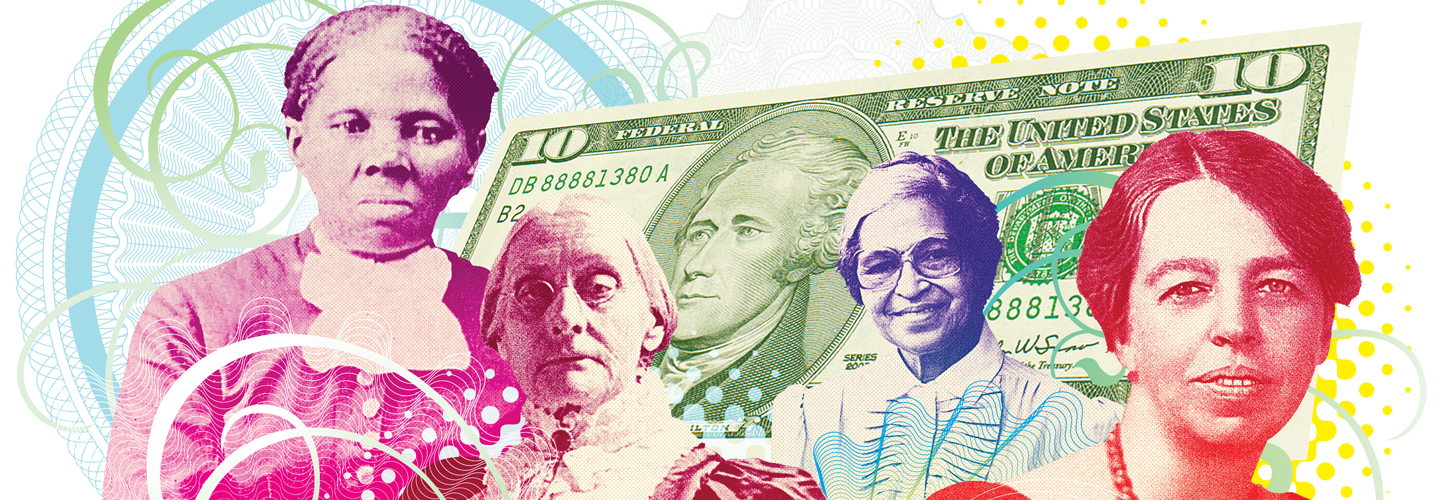It’s easy to see why the U.S. Treasury Department’s plan to feature a woman on the $10 bill has sparked excitement. After all, only one woman’s portrait has ever appeared on U.S. paper currency. That was Martha Washington’s, on a one-dollar silver certificate* issued in the 1800s.
Amid the cheers, however, there has also been unexpected controversy. Why the $10 bill instead of a more widely used denomination? Why replace Founding Father Alexander Hamilton instead of a less popular figure, such as President Andrew Jackson, who’s on the $20 bill?
“Our goal was to trigger a real conversation in this country about who are the women who helped build our country, who built our democracy, what does democracy mean to Americans,” Treasury Secretary Jacob Lew said recently. That seems to be what he’s gotten—and much more.
The U.S. Bureau of Engraving and Printing, which has designed and printed the nation’s paper money since 1862, has put billions of bills into circulation. Other than the Martha Washington certificate, every one has featured a portrait of a man.
Women have fared somewhat better on coins. For example, Susan B. Anthony, the 19th-century social reformer who fought to get women the right to vote, was featured on a dollar coin starting in 1979. Sacagawea, the Native American guide to the Lewis and Clark expedition of 1804-1806, appeared on a dollar coin beginning in 2000. But neither of those coins is still being minted for circulation.

